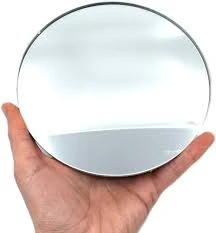

The Allure of Gray Tinted Glass
In the realm of architecture and design, materials play a crucial role in defining not just aesthetics but also the functionality and ambiance of a space. Among these materials, gray tinted glass has emerged as a favored choice for both residential and commercial buildings. Its unique blend of style, practicality, and versatility makes it an excellent option for a variety of applications.
Gray tinted glass is characterized by its neutral hue, which ranges from light gray to deep charcoal. This subtle tint not only enhances the appearance of glass but also provides a level of privacy and shading that clear glass cannot offer. One of the primary reasons for its popularity is its ability to reduce glare without compromising the influx of natural light into a space. Unlike darker tints, which may overly darken an interior, gray tinted glass strikes a balance, maintaining brightness while softening harsh sunlight.
Furthermore, gray tinted glass serves a functional purpose in energy efficiency
. As concerns over energy consumption and sustainability continue to rise, building owners and architects are increasingly turning to glass products that provide insulation against heat and cold. Gray tinted glass can reflect a significant amount of solar energy, helping to keep interiors cooler during scorching summer months. This can lead to reduced reliance on air conditioning, ultimately lowering energy bills and minimizing environmental impact.
Another attractive feature of gray tinted glass is its ability to harmonize with a wide range of architectural styles. Whether incorporated into sleek modern designs or traditional structures, gray tinted glass complements various materials, including metal, stone, and wood. Its understated elegance allows it to blend seamlessly with both urban landscapes and serene natural environments. As cities become more populous and urbanization continues, the versatility of gray tinted glass becomes increasingly essential in the design of high-rise buildings, offices, and public spaces.
In addition to its aesthetic and practical benefits, gray tinted glass ensures safety and security. The tinted layer provides additional strength, making the glass more resistant to shattering. This characteristic is particularly valuable in high-traffic areas or in regions prone to severe weather conditions. Moreover, the darker tint can help to obscure the view from the outside, creating a sense of privacy for occupants while still allowing for visibility from within the building.
The applications of gray tinted glass are extensive. From windows and sliding doors to glass facades and skylights, the material offers endless possibilities for creativity. In office buildings, large expanses of gray tinted glass can create an inviting yet professional environment, allowing natural light to fill the space while minimizing distractions from outdoor elements. In residential settings, homeowners find that integrating gray tinted glass in their design not only elevates aesthetic appeal but also adds a layer of comfort and tranquility.
In conclusion, gray tinted glass is more than just a trend—it's an enduring choice that blends beauty, functionality, and practicality. Its capacity to filter light, enhance energy efficiency, provide privacy, and adapt to a variety of design styles makes it a valuable asset in modern architecture. As we continue to innovate in design and build for the future, gray tinted glass will undoubtedly play a significant role in shaping our spaces for comfort and efficiency.